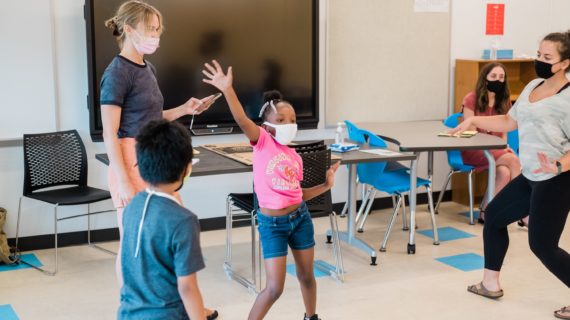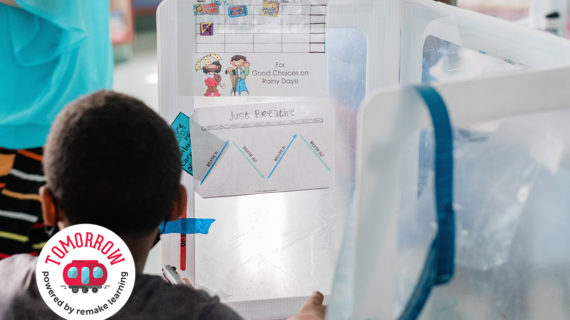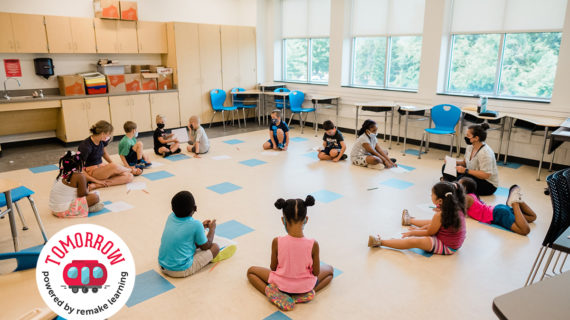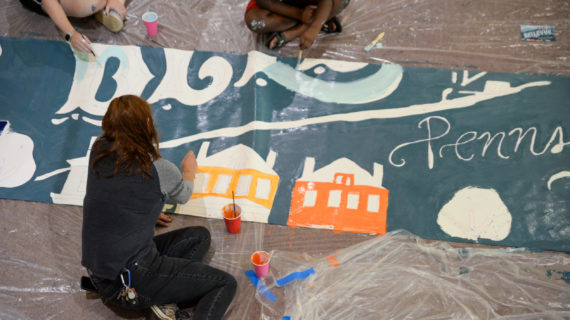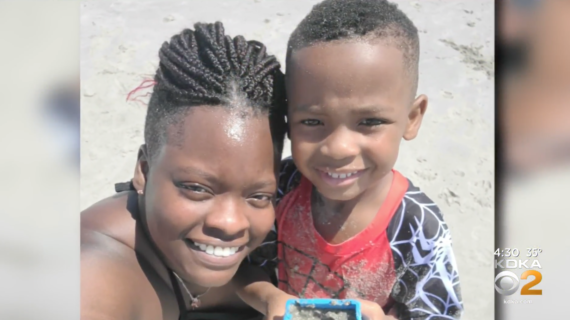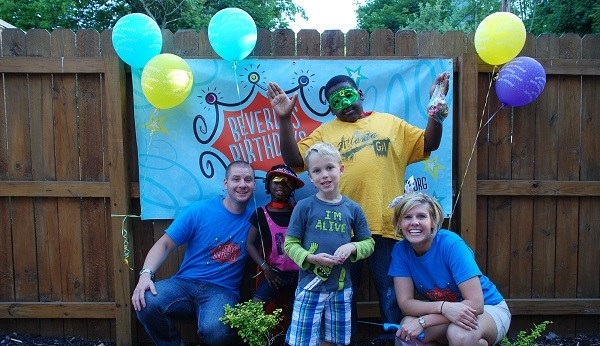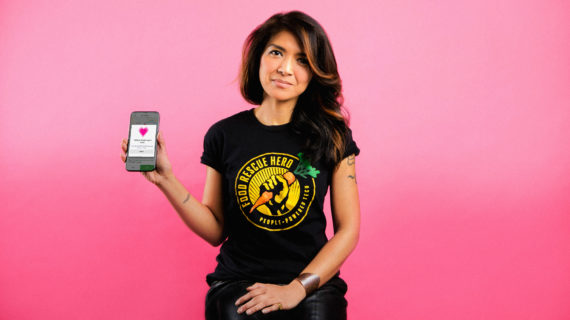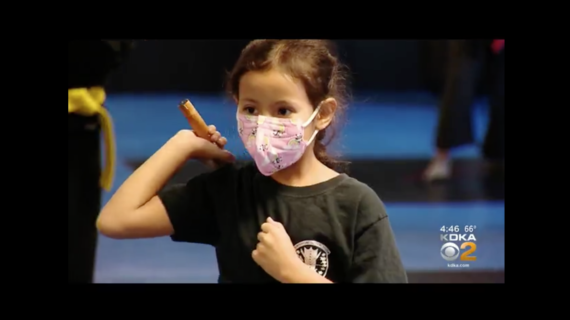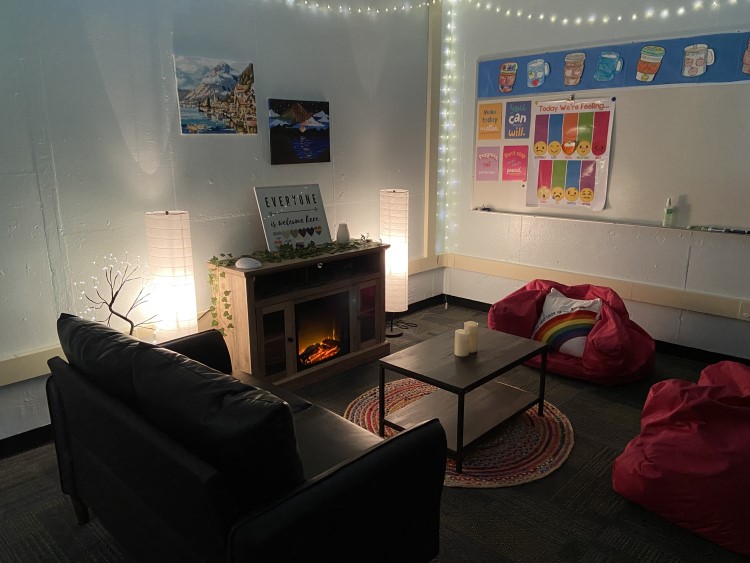
Chill Project opens first space for elementary students in Carnegie
By Sinéad McDevitt
At Carnegie Elementary School, there’s a special room where students can take a break and relax. There are soft LED lights, bean bag chairs and even a large cabin they can sit inside. This is the Chill Room, a new addition to the school thanks to a partnership with Allegheny Health Network’s Chill Project.
The Chill Project was started in 2019 by current program supervisor William Davies, who was responding to the high death rates of students he observed while working in local school districts.
“Woodland Hills that year had lost five kids to community violence,” Davies says. “And then Pine-Richland, a very different district, lost five or six kids to suicide that year … It’s very morbid, but it’s very real, and The Chill Project gets in the pathway before that end result.”
Donald Alexander, a second-grade teacher at Carnegie Elementary School, heard about The Chill Project on NPR before the pandemic and reached out to Davies to get involved with the program. Alexander says at the time they were looking for a program to help address the rising number of students in crisis.
“We were very much in need of a place that didn’t need a real structured appointment type scheduling. We really needed something where kids could get help, as soon as possible,” Alexander says.

The school worked with The Chill Project to create Carnegie Elementary’s Chill Room, which opened in August. While there were other Chill Rooms in different districts, Carnegie is the first one for elementary schoolers, according to Davies.
“The high school kids tend to have a little bit more autonomy in the space itself, a little bit more freedom to come in as they are.”
Carlynton Junior-Senior High School also implemented a Chill Room during the pandemic. Samiya Fairely and Kaylee Shipley are both 11th graders who have made use of the Chill Room.
“Whenever we’re dealing with something or feeling overwhelmed by toxic situations, usually we just come in here,” Fairely says. “You sit, you talk things out, you get calmed down.”
Alexis Sheets, is a psychologist provided by Allegheny Health Network (AHN) to help students in the Chill Room. Fairely and Shipley say Sheets is the thing they like most about the Chill Room.
“When I come in here it’s really just getting myself back to where I need to be to get through the day,” Shipley says. “Miss Lexi talks to us and we just listen.”
Each Chill Room comes with an AHN-licensed counselor or social worker who is there full-time to help students. The Carlynton School District contracts AHN to pay for the personnel. Patricia Serdy, the counselor at Carnegie Elementary School, says this is especially good because many students in the district aren’t able to access that kind of care otherwise.
“Kids that were needing counseling, a lot of times our parents don’t have the transportation and they’d have to be taking the bus. The kids were missing an hour to get there, an hour of counseling, an hour to get back,” Serdy says. “Having that in the building has been really helpful at giving our kids increased access to mental health care.”
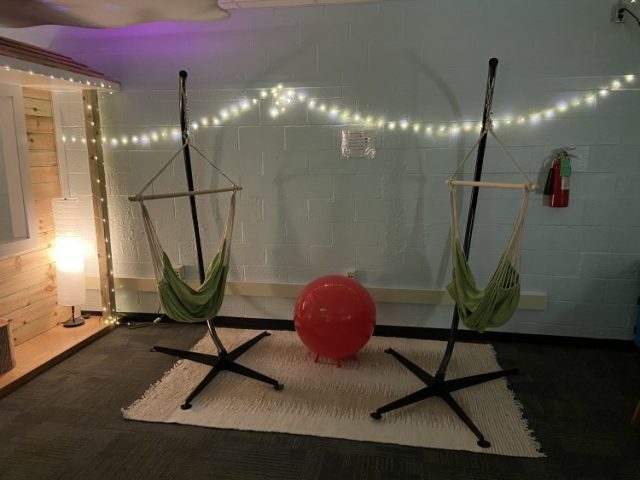
The Chill Project and Carlynton School District also received a grant to work with the nonprofit Awaken Pittsburgh to provide professional development and mindfulness education for teachers so they will be better equipped to provide preventative care to students.
“[Awaken Pittsburgh] has been coming in and they’ve been doing about 26 hours of professional development for teachers and staff. Half of that is teaching us how to use mindfulness in our own life,” Serdy says, “and the other half is how you apply it in the classroom in a trauma-informed way.”
The Chill Project is hoping to expand to three or four more schools in the coming year. Alexander says the goal was to start a trend that will spread to other districts.
“Our vision of this is something that should be a state model, something that all schools should have access to now,” Alexander says. “Dr. Davies, one of the things he always says is ‘my goal is to be put out of business.’”

